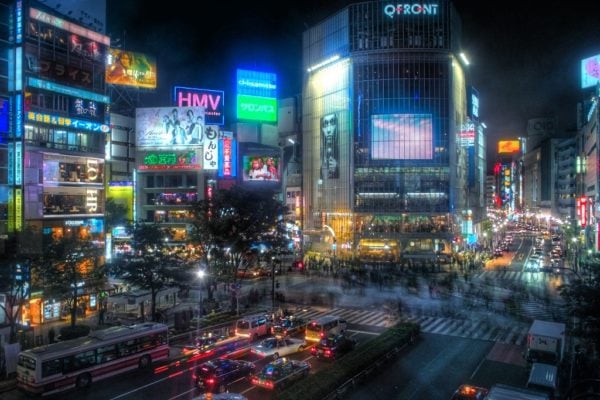
It’s now November, but reviewers are still churning out thinkpieces about “Blade Runner 2049,” Denis Villeneuve’s very pretty, very expensive follow-up to an old cyberpunk classic. There is (or seems to be) a lot to talk about regarding this film: its ontological questions, its clumsy treatment of race, its post-ecosystem setting and its brutalization of women. On the other hand, I am most interested in this movie’s portrayal of survival and alienation, of people who are wholly fungible and alone under its late-capitalist hellscape.
Perhaps this is because I live in the (uncanny, Silicon) Valley, where technology, inequality and labor constantly churn in our Soylent-addled public imagination. Media like “2049” make the problems about our current era explicit — but this is, of course, an obvious fact about science fiction, and it is not what this article is about.
I won’t really be talking about “Blade Runner 2049” either. Instead, I’d like to think about cyberpunk as a genre, using the earliest published work of one of its originators as a conduit. I’d like to think about how cyberpunk turns this dismal and systemic alienation into profundity and the consequences of doing so.
William S. Gibson’s “Fragments of a Hologram Rose,” first published in 1977, takes place over the course of one sleepless night in a city plagued by brown-outs and acid rain. Its protagonist, like “2049’s” K or “Blade Runner’s” Deckard, moves through the world as a perpetual lone wolf, barely a cut above lowlife. Parker starts out as a young boy indentured to an American subsidy of an overseas mega-corporation. But at age 18, two years before he would be “eligible for full employee status,” he hops the fence surrounding his compound for good.
Afterward, Parker wanders the apocalyptic shanty towns that dot the Southwest. In San Francisco, Gibson tells us, “One or another of four different ‘provisional’ city governments had done such an efficient job of stockpiling food that almost none was available at street level.” In Texas, with its black-market economies and a lack of infrastructure, it is “simpler to buy a gun than a hot bath.” He finally finds his windfall in the form of a pocketful of antibiotics hidden in a dead woman’s jacket in the Texas underbrush, which can buy the forged papers he needs to start over. In the story’s present, Parker is now 30 and holds down a job that barely pays for the machine he needs to fall asleep at night.
Given the world it portrays, in which children are legally sold to plastics combines and people can no longer sleep without technological help, one would expect “Fragments” to be a cautionary tale, a takedown of the power structures that will make this world possible. It’s not. “Fragments of A Hologram Rose” is fundamentally a story about love; Parker thinks through his personal history in order to think through his just-ended relationship.
His past life is revealed in flashbacks as he cleans out the last of his ex-lover’s things from his closet. He wants to know if love itself is just a history, if it can ever be more than the things his partner has done with him — getting him his papers, sharing a home, leaving. To me, this question feels deeply and self-consciously “universal,” in that it both echoes contemporary concerns and miraculously transcends the world that produced it.
It is precisely because Parker’s past was so terrible that his turn toward introspection and philosophy is so miraculous and profound. Isn’t it proof that something of the “human spirit,” be it love or kindness or empathy, can endure in even the worst conditions? And can this future really be that bad if love can survive, even temporarily? Perhaps there’s something optimistic about the future that cyberpunk presents. In its focus on criminality and subversion, the genre envisions a failure of the forces that want to survey and control. If we can’t be completely known, we can’t be reduced to consumers and laborers.
In cyberpunk, you can run away from your indenturement and hide “off the grid.” It’s also possible to evade the roaming eye of the corporate overlords in plain sight; you can have a job and a social security number but still hack your “Sendai Sleepmaster” in ways the manufacturer did not intend. By remaining unseen in these ways, one can practice a genuine empathy and love, albeit rarely, resisting becoming pure utility.
On top of warning us about things to come and reflecting our current society, cyberpunk also reconciles us with the future. It promises us that survival, both physical and emotional, is still possible — and perhaps always will be. Yet this reconciliation is also dangerous, because it sells us on mere survival. The gestures of empathy shown by “Fragment’s” Parker and “2049’s” K are made poignant by their impossibility, their scarcity, in the worlds these characters live in.
In the end, the people in these fictions are still, for the most part, fungible. The relentless upkeep that comes along with remaining unseen demands that mindset. In “Fragments,” Gibson states that Parker has forgotten the original reason for breaking his indenture — a sign that these two worlds, the criminal and “the system,” aren’t very different at all. When Parker takes the antibiotics off the corpse of that unnamed woman, he reduces her to defeated competitor and lucky coincidence. Can survival redeem such an existence? But is the alternative — to attack these alienating structures at their root, to revolt and lose this precious invisibility — worth the risk?
I’ve been talking about these questions as if they’re constrained to the hypothetical future situations cyberpunk lays out for us. But, as Gibson himself once said, “The future is already here — it’s just not evenly distributed.” Queer people and people of color have faced these tensions surrounding assimilation, visibility and survival for decades. There have always been narratives that mediate our reconciliation with the status quo. These stories might help us, but they won’t save us in the end.
Contact Ashley Huang at ashhuang ‘at’ stanford.edu.
